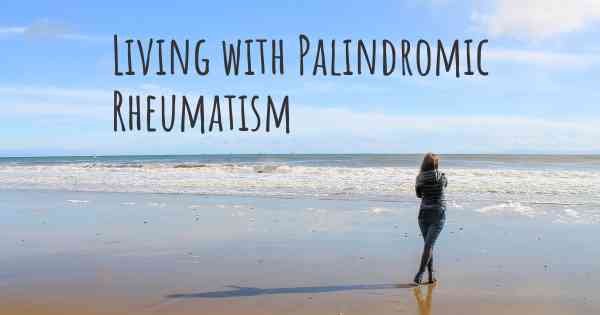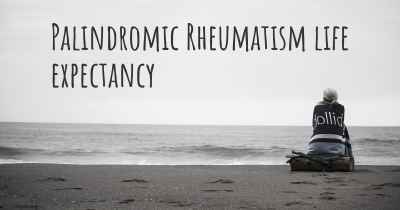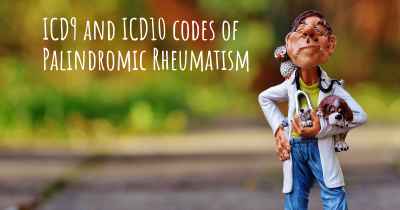Living with Palindromic Rheumatism. How to live with Palindromic Rheumatism?
Can you be happy living with Palindromic Rheumatism? What do you have to do to be happy with Palindromic Rheumatism? Living with Palindromic Rheumatism can be difficult, but you have to fight to try to be happy. Have a look at things that other people have done to be happy with Palindromic Rheumatism

Living with Palindromic Rheumatism
Palindromic Rheumatism (PR) is a rare form of inflammatory arthritis characterized by recurrent episodes of joint pain, swelling, and stiffness. Living with PR can be challenging, but with proper management and lifestyle adjustments, it is possible to lead a fulfilling life. Here are some strategies to help you navigate life with Palindromic Rheumatism:
1. Educate Yourself
Knowledge is power when it comes to managing PR. Take the time to understand the condition, its symptoms, triggers, and available treatment options. Consult with healthcare professionals, read reputable sources, and join support groups to gain insights from others who share similar experiences.
2. Work Closely with Your Healthcare Team
Building a strong partnership with your healthcare team is crucial. Regularly visit your rheumatologist, who specializes in arthritis and related conditions, to discuss your symptoms, treatment options, and any concerns you may have. They can help tailor a treatment plan that suits your specific needs.
3. Follow Your Treatment Plan
Adhering to the prescribed treatment plan is essential in managing PR. This may include medications to reduce inflammation and control symptoms, such as nonsteroidal anti-inflammatory drugs (NSAIDs) or disease-modifying antirheumatic drugs (DMARDs). Follow your doctor's instructions carefully and communicate any changes in your symptoms or side effects you may experience.
4. Manage Stress
Stress can exacerbate PR symptoms, so it's important to find effective ways to manage it. Engage in relaxation techniques like deep breathing exercises, meditation, or yoga. Prioritize self-care activities that bring you joy and help you unwind. Additionally, consider seeking support from a mental health professional to develop coping strategies for dealing with stress.
5. Stay Active
Regular physical activity is beneficial for managing PR. Engage in low-impact exercises like swimming, cycling, or walking to keep your joints mobile and maintain muscle strength. Consult with a physical therapist who can design an exercise program tailored to your abilities and limitations. Remember to listen to your body and pace yourself to avoid overexertion.
6. Maintain a Healthy Lifestyle
A well-balanced diet can help reduce inflammation and support overall health. Include plenty of fruits, vegetables, whole grains, and lean proteins in your meals. Avoid processed foods, sugary snacks, and excessive alcohol consumption, as they may trigger inflammation. Adequate sleep is also crucial for managing PR, so establish a regular sleep routine and create a comfortable sleep environment.
7. Protect Your Joints
Take steps to protect your joints and minimize strain. Use assistive devices like braces or splints to support affected joints during flare-ups. Practice good ergonomics by maintaining proper posture and using ergonomic tools or modifications at work or home. Avoid repetitive motions and heavy lifting that can strain your joints.
8. Seek Emotional Support
Living with a chronic condition like PR can be emotionally challenging. Reach out to friends, family, or support groups to share your experiences and feelings. Connecting with others who understand your journey can provide valuable emotional support. Consider joining online communities or local support groups to connect with fellow PR patients.
9. Monitor Your Symptoms
Keep track of your symptoms, triggers, and treatment effectiveness in a journal or using smartphone apps. This can help you identify patterns, understand your condition better, and communicate effectively with your healthcare team during appointments.
10. Stay Positive and Adapt
Living with PR may require making adjustments to your daily routine and expectations. Accepting your condition and staying positive can help you adapt to the challenges it presents. Celebrate small victories, focus on what you can do, and seek joy in life's simple pleasures.
Remember, everyone's experience with Palindromic Rheumatism is unique, and what works for one person may not work for another. It's important to consult with your healthcare team and tailor strategies to suit your individual needs. By taking an active role in managing your condition and making necessary lifestyle adjustments, you can lead a fulfilling life despite Palindromic Rheumatism.
Posted Sep 6, 2017 by Sarah 1150
Posted Dec 1, 2019 by MaddOryxite 3570








